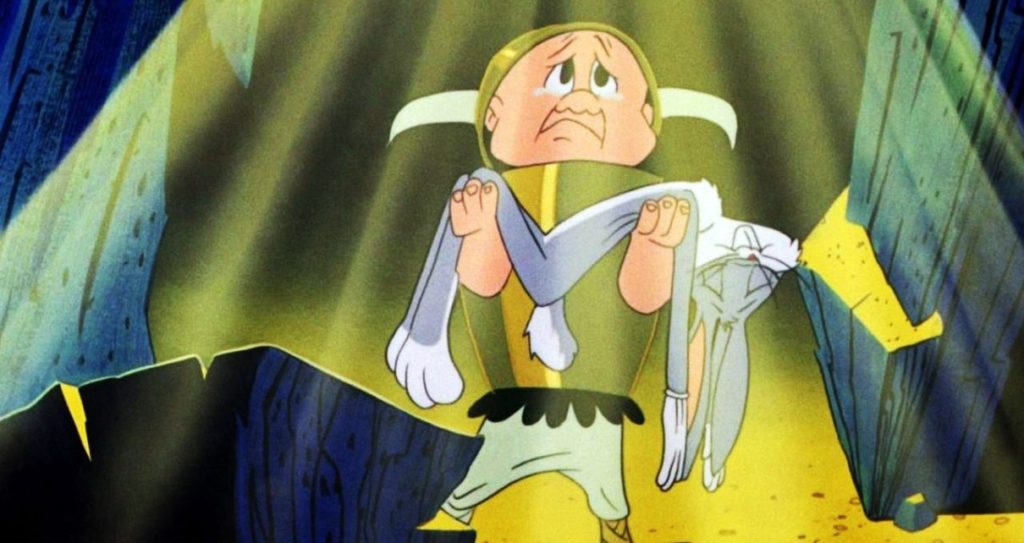
For many viewers, especially those born in the second half of the twentieth century, the 1957 Merrie Melody, “What’s Opera, Doc?” remains a key entry point to opera as an art form. A parody of the work of Richard Wagner, foremost his “Ring Cycle,” the short animated cartoon follows Elmer Fudd and his eternal nemesis, Bugs Bunny, through an impressionistic and surreal landscape in which the two characters sing and perform humorous and exaggerated parodies of Wagnerian leitmotifs.
“What’s Opera, Doc?” may seem an odd addition to a list of spiritually significant musicals, but its impact goes far beyond the world of animation: the film was the first cartoon selected for preservation by the US National Film Registry in 1992 for its “culturally, historically or aesthetically significant” value. More than that, the film offers an answer to the question posed by its title: What is opera, Doc? Opera isn’t just people in funny costumes singing dramatically. Director Chuck Jones moves beyond the old cartoon musical habit of “Mickey Mousing” (where the animated characters’ actions mimic the rhythms of the music exactly); here the emphasis is on opera’s artifice and ritualized story arcs, which express some of the biggest human emotions. Bugs Bunny and Elmer Fudd use the opera form as they reenact their hunt: Elmer Fudd with his magic helmet as Siegfried, wants to “Kill the Wabbit;” Bugs in the guise of the love interest, Brünnhilde, once again fools poor Elmer Fudd. The humour is in the absurdity of the juxtaposition, but also the frequent breaking of the fourth wall and laying bare of opera’s conventions.
“What’s Opera, Doc?” was the third opera or classical-music themed cartoon short directed by Jones and written by Michael Maltese in the late-40s and into the 50s, following “The Rabbit of Seville” and “Long-haired Hair.” The later cartoon features Bugs hilariously adopting the free-hand conducting style of famed composer Leopold Stokowski, whose conducting itself was featured in Disney’s Fantasia. In turn, Fantasia is mocked in “What’s Opera, Doc?” during the short’s opening sequence, in lightning and thunder and devilish shadowplay it recalls Disney’s “Night on Bald Mountain” sequence. While Fantasia gave classical music and opera a place of honour in cinema, Bugs Bunny and Elmer Fudd are no less educational, playfully showing opera’s strength in showcasing the formal patterns of drama and the power of music to carry a story through to a predetermined ending. While opera may not be the most popular genre of theatrical performance anymore, through Looney Tunes and Merrie Melodies it continues to entertain and put a smile on viewers’ faces. As Bugs declares in the short’s finale, breaking the scene during his character’s death: “What were you expecting? A happy ending?”
— Anders Bergstrom (2022); 3Brothers Film
- Directed by: Chuck Jones
- Produced by: Edward Selzer
- Written by: Michael Maltese
- Music by: Mitt Franklyn; Michael Maltese
- Cinematography by:
- Editing by: Treg Brown
- Release date: 1957
- Running time: 7 minutes
- Language: English
Arts & Faith Lists:
2022 Top 25 Movie Musicals — #10